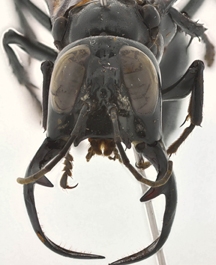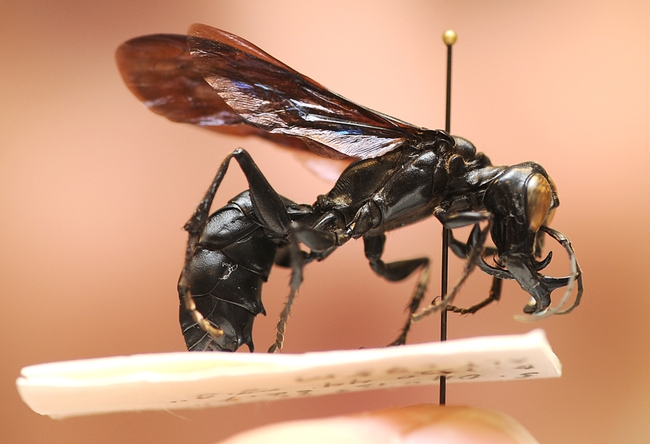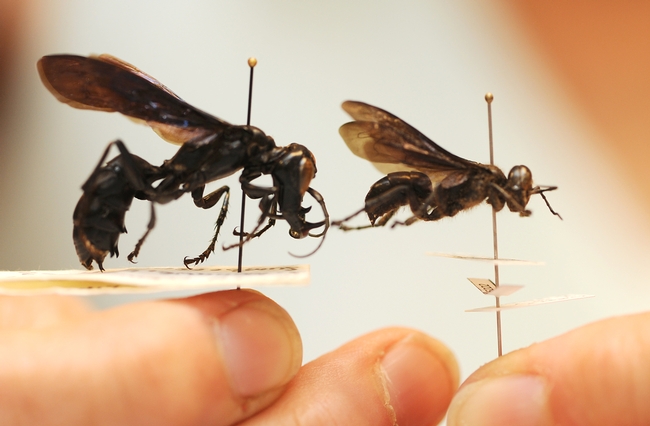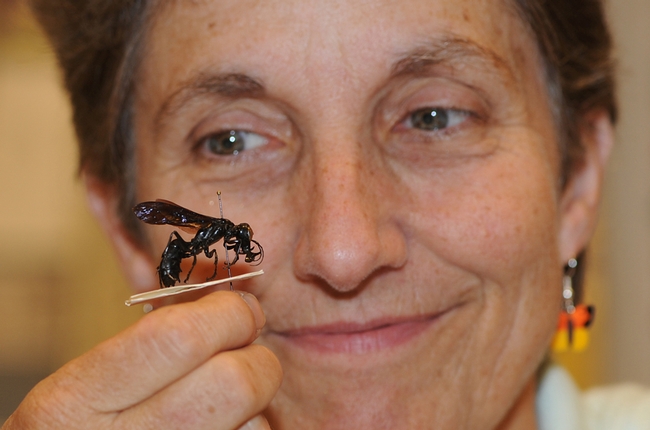
The new species that Lynn Kimsey, director of the Bohart Museum of Entomology and professor of entomology at UC Davis, discovered on the Indonesian island of Sulawesi measures a whopping two and a half inches long.
That's the male "warrior wasp." The female is a little smaller. Just a little.
First thing folks say is "Wow!"
Next they ask: "Does it sting?"
Like all wasps, the female does; the male does not.
The male's jaws "are so large that they wrap up either side of the head when closed," Kimsey says. "When the jaws are open they are actually longer than the male’s front legs. I don’t know how it can walk."
Indeed--those jaws look like elephant tusks dragging on the ground.
Kimsey discovered the warrior wasp on the Mekongga Mountains in southeastern Sulawesi on a recent biodiversity expedition funded by a five-year grant from the International Cooperative Biodiversity Group Program.
The insect-eating predator belongs to the genus Dalara and family Crabronidae.
Kimsey says she's going to name it Garuda, after the national symbol of Indonesia. Garuda is a mythical half-man, half-eagle warrior, magnificent in combat.
Kimsey is a collaborator of a five-year $4 million grant awarded to UC Davis scientists in 2008 to study the biodiversity of fungi, bacteria, plants, insects and vertebrates on Sulawesi, all considered threatened by logging operations and mining developments. Much of the mountain was logged two decades ago and now there are plans for an open pit nickel mine, Kimsey said.
“There’s talk of forming a biosphere reserve to preserve this,” she says. “There are so many rare and endangered species on Sulawesi that the world may never see."
This is one they can see.
Attached Images:

Close-up of a new wasp species discovered by UC Davis entomologist Lynn Kimsey. (Photo by Kathy Keatley Garvey)

Male (left) and female in comparison. (Photo by Kathy Keatley Garvey)

Entomologist Lynn Kimsey with her newly discovered species of wasp; this is a male. (Photo by Kathy Keatley Garvey)